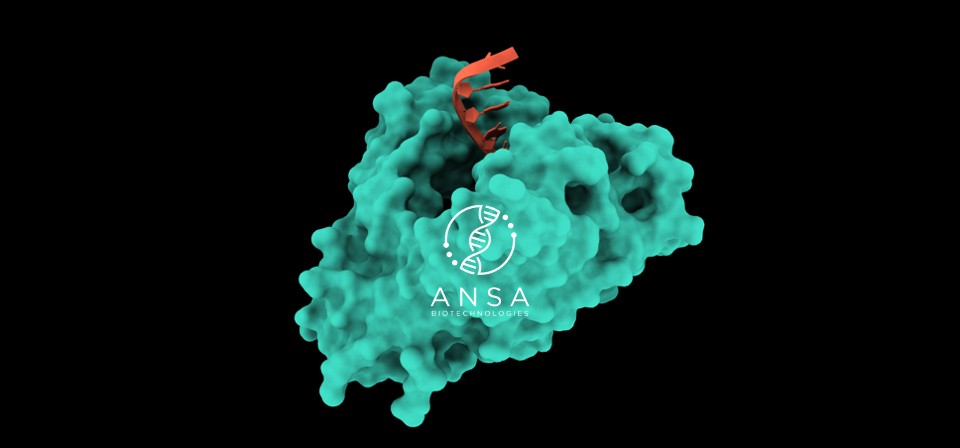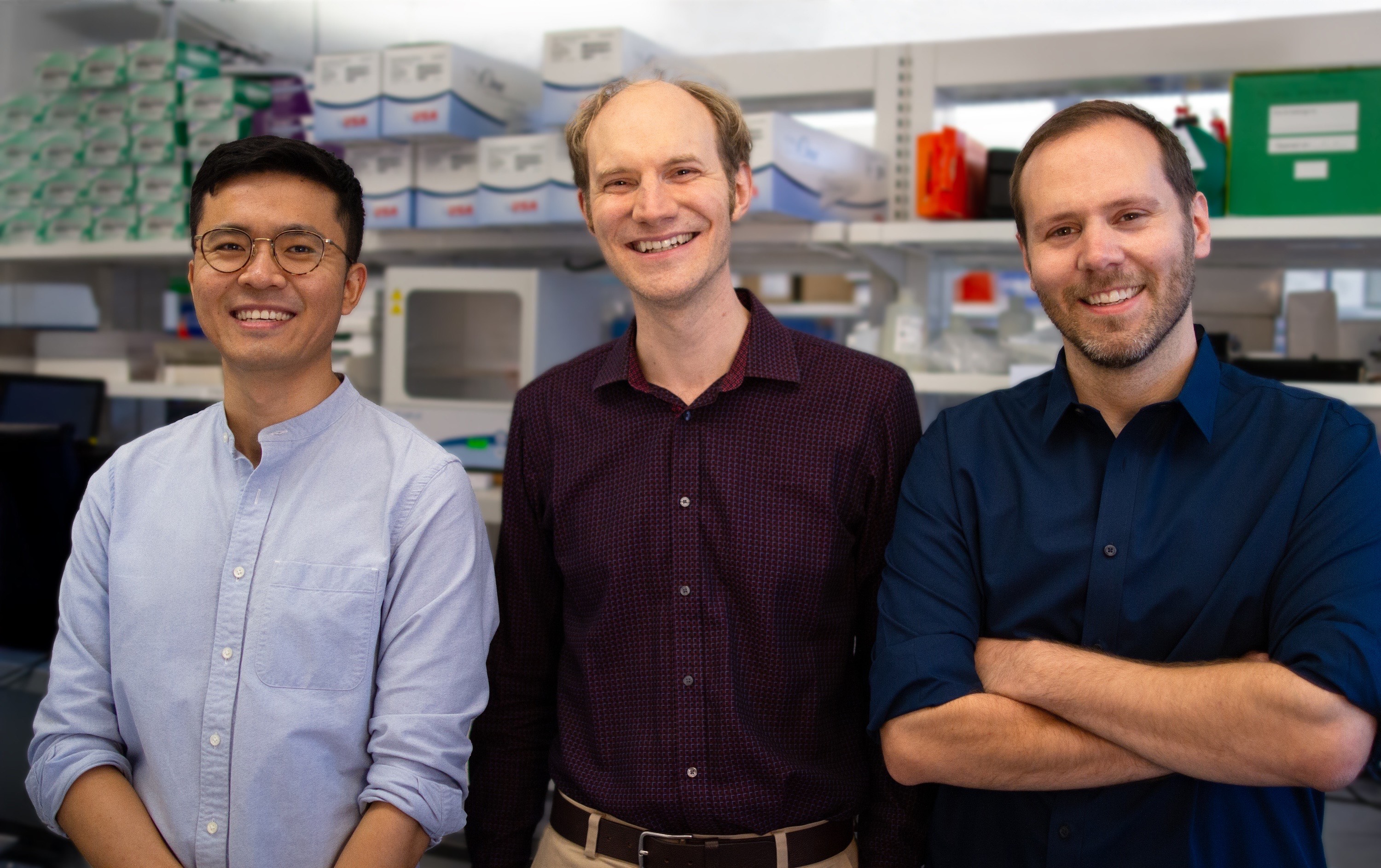Adding to the microbial toolbox: Optimizing skin microbes to treat skin disease
How giving beneficial microbes the ability to produce human proteins may make them even more powerful contributors to skin healthThis story is brought to you by Azitra, a preclinical stage biotechnology company combining the power of the microbiome with cutting-edge genetic engineering to treat skin disease.Millions of bacterial cells, enclosed within a capsule, journey to the large intestine. There, they get to work, manufacturing and releasing an enzyme missing in individuals with a rare disorder called Gaucher disease Type 1. The company that engineered the bacteria, Blue Turtle Bio, hopes to target other rare diseases, too, and they are not alone. Other companies, such as Synlogic, are engineering intestinal bacteria to produce proteins that help with gastrointestinal and autoimmune conditions, and even cancer immunotherapy. And some are leveraging common intestinal probiotic species, such as Lactobacillus, to exert their action in other areas of the body, such as the mouth to alleviate chemotherapy-associated oral mucositis (Intrexon).
More than skin deep?
But there is one human organ that is almost a clean slate when it comes to bioengineering beneficial microbes. As we discussed last month, healthy skin is critical for our general health and well-being. Our skin can be affected by a variety of conditions, ranging from mildly uncomfortable and embarrassing (acne) to life-threatening (Netherton Syndrome). While the majority of academic and biotech research laboratories are focusing on the gut microbiome, a few game-changers have set their sights on a new target: the skin.

Skin metagenomics and defines relative abundance of viral, bacterial and fungal components of the microbial community. Credit: Genome.gov
The critical tool in the bioengineered bacterium’s toolbox: human proteins
Bacteria are everywhere, and their ubiquitous nature and the ability of most species to co-exist harmlessly with humans make them ideal candidates for new synthetic biology approaches to healthcare. Just as investigators use easy-to-modify resident gut microbes like E. coli and Lactobacillus to target gut-related disorders, skin commensals like Staphylococcus epidermidis and Propionibacterium acnes are being modified to fight skin disease.The premise is simple: Take a commensal microbe that supports skin health, such as Staphylococcus epidermidis, and give it an additional tool in the form of a human protein necessary for healthy skin function or that can reduce harmful inflammatory responses. For example, skin bacteria can be engineered to secrete interleukin-10 (IL-10), an anti-inflammatory cytokine that can help reduce skin inflammation. Even problematic species can be engineered to cross over from the dark side. Xycrobe, based in La Jolla, California, is engineering Propionibacterium acnes to secrete IL-10 to combat the very condition it causes: acne.Bioengineered bacteria such as P. acnes aren’t likely to come with the severe side effects that render some pharmaceuticals more unpleasant than acne itself. And, while many pharmaceutical products are unable to penetrate into the deeper layers of the skin, microbes, and the human proteins they produce, aren’t inhibited in this manner.
Staphylococcus epidermidis + filaggrin = perfect combination
Up to 10% of the world’s population is affected by eczema, a skin disease that causes red, dry, and itchy skin. Ichthyosis vulgaris, a skin disorder affecting 1 in 250 people, results in chronic, dry, scaly skin. The causes of these two diseases are different, but they have one thing in common: sub-optimal skin moisture and a deficiency in the skin protein filaggrin.

'Applying hydrocortisone cream to eczema' by Kate Whitley. Credit: Kate Whitley.CC BYAzitra, Inc., a biotech company engineering skin microbes that we covered last month, is tackling the skin moisture imbalance seen in both eczema and ichthyosis by engineering their proprietary S. epidermidis strain to produce an important human protein: filaggrin.Filaggrin binds to keratin fibers in epithelial cells and is critical for maintaining a healthy, strong skin barrier. Without filaggrin, moisture levels decrease and skin cracks, allowing antigens and bacterial pathogens such as S. aureus, associated with eczema, to infiltrate, proliferate and cause inflammation. Deliver filaggrin, restore moisture levels in the skin and strengthen the barrier. As Travis Whitfill, Azitra CSO, says, “giving a bacterial species that already supports healthy skin the means to produce a protein missing in eczema and ichthyosis vulgaris is a groundbreaking strategy. This synergistic approach offers potent potential in a single therapeutic.”
The power of plasmids
It seems so simple, but is it really? How are bacteria modified to produce proteins of human origin like filaggrin? The key is in plasmids: small circular chunks of DNA that contain genes not found on bacterial chromosomes. Plasmids are ubiquitous; many pathogenicity traits, such as antibiotic resistance genes, are found on plasmids. Now, plasmids are being used to give bacteria new traits, traits that can help people.The plasmid Azitra makes to transform S. epidermidis into a filaggrin producing machine comprises five basic components: a promoter, a ribosome binding site, a secretion signal, the gene of interest (in this case, filaggrin), and an export signal: all of the basic components for transcribing and exporting a functional protein.To treat the skin, the transformed S. epidermidis cells are mixed with other ingredients to form a cream for topical application. Studies in mouse models of atopic dermatitis have shown that these bioengineered bacteria can reduce moisture loss, as hoped. Now, Azitra is moving forward to testing its proprietary S. epidermidis in human trials.But the plasmid design has another advantage: Components can be easily switched out. For example, Azitra is also tackling a rarer form of ichthyosis, Netherton Syndrome. In this case Azitra switches the filaggrin gene in their S. epidermidis plasmid for another gene, SPINK5. This gene is often mutated in patients with Netherton Syndrome and it encodes a serine protease with anti-inflammatory activity, LETK1.

Azitra lab.
Modifying modified bacteria: what the future holds for bioengineered skin probiotics
Bacterial modification doesn’t stop at human protein production, however. For example, biosensors may be added, permitting protein delivery to the exact locations where needed. And kill switches may also prove critical: Producing more protein than needed, or when it is no longer needed, could cause more harm than good. Biosensors and kill switches fine-tune bioengineered bacteria into highly optimized, refined living machines that provide specific benefit only when and where needed.Azitra is also focused on safety and has modified its S. epidermidis strain in another way: they have made it an auxotroph. Auxotrophs are mutant strains requiring nutrients that unmodified (wild type) strains do not require. In this way, growth -- and therefore, protein production -- can be controlled and fine-tuned simply by adding more nutrient -- or taking some away. This approach is much more attractive than some alternatives, such as treatment with antibiotics that target the bioengineered strain but can also have detrimental effects on the microbiome. “Our solution offers a key safety advantage, we can control the growth of the bacteria on the skin,” says Whitfill.While bioengineered bacteria like Xycrobe’s P. acnes or Azitra’s S. epidermidis are on track to change how skin disorders are treated, it is likely that the general health and well-being of skin will soon be maintained through bioengineered bacteria, too. Indeed, S. epidermidis supports overall skin health, not only contributing to appropriate moisture levels, but also keeping skin smooth and healthy-looking by reducing inflammation and maintaining appropriate lipid content. It may not be long until your sunscreen or daily moisturizer contain a new active ingredient: bacteria.Don’t miss the “Engineering the microbiome” session at SynBioBeta 2018, The Global Synthetic Biology Summit in San Francisco, October 1–3. Panelists include: Zack Abbottof ZBiotics, Jasmina Aganovic of Mother Dirt, Ted Fjallman of Prokarium, Eugene Joseph of Prime Discoveries, David Kyle of Evolve Biosystems, and Travis Whitfill of Azitra.This story is brought to you by Azitra, a preclinical stage biotechnology company combining the power of the microbiome with cutting-edge genetic engineering to treat skin disease.




.svg)





.png)



.jpg)

.gif)